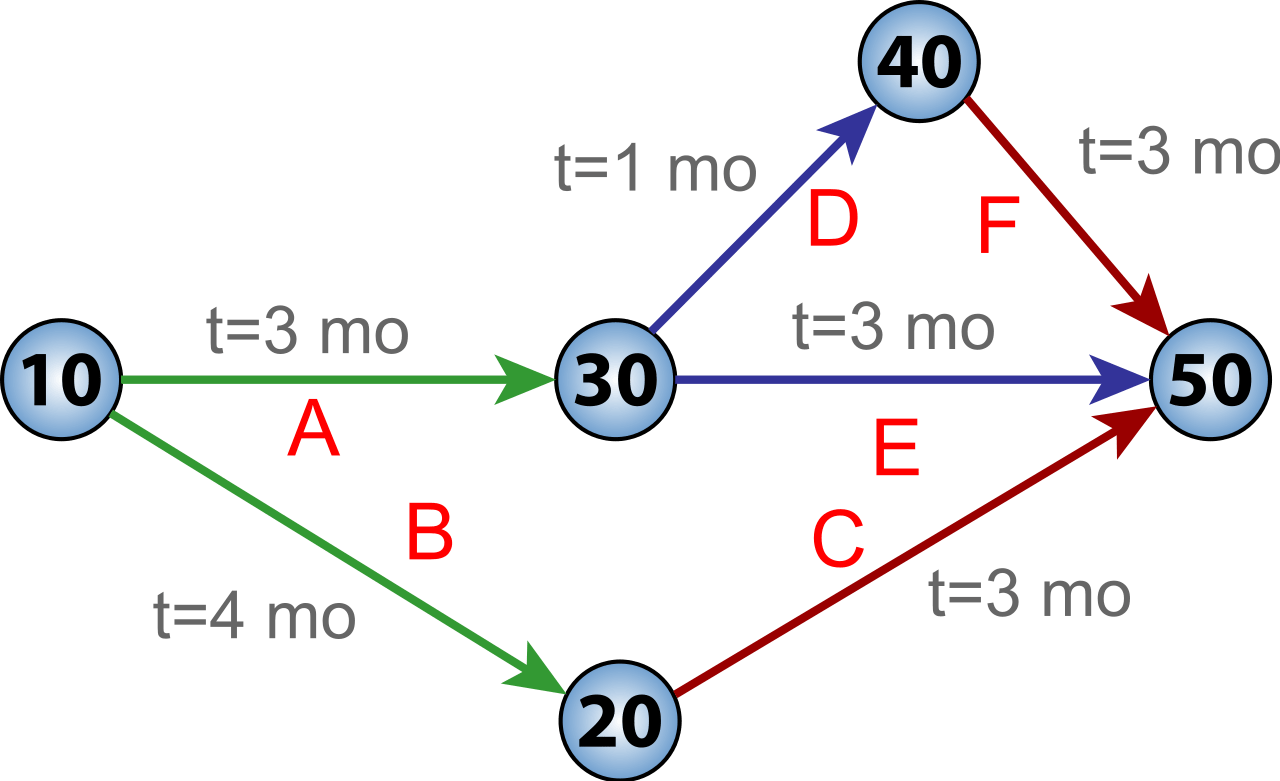The First Step in the Creation of a Program Evaluation Review Technique Chart Is to
What is Project Evaluation Review Technique (PERT)?
In project management, the Project Evaluation Review Technique, or PERT, is used to place the time information technology takes to finish a item task or activeness. It is a system that helps in the proper scheduling and coordination of all tasks throughout a projection. It also helps in keeping track of the progress, or lack thereof, of the overall project. In the 1950s, the Project Evaluation Review Technique was developed past the US Navy to manage the Polaris submarine missile programme of their Special Projects Office.

Knowing the fourth dimension it should take to execute a project is crucial, equally information technology helps project managers determine on other factors such as the upkeep and job delegation . No thing how big or small-scale a project is, estimates can exist too optimistic or pessimistic, but using a PERT chart volition help determine realistic estimates.
Creating a PERT Chart
A flowchart is used to draw the Project Evaluation Review Technique. Nodes represent the events, indicating the start or end of activities or tasks. The directorial lines indicate the tasks that need to be completed, and the arrows testify the sequence of the activities.
At that place are four definitions of time used to estimate projection fourth dimension requirements:
- Optimistic time – The to the lowest degree corporeality of time it can take to complete a task
- Pessimistic fourth dimension – The maximum amount of time it should take to consummate a task
- Most likely time – Assuming in that location are no problems, the best or nearly reasonable estimate of how long it should have to consummate a job.
- Expected time – Assuming there are issues, the best guess of how much time volition be required to complete a task.
Here are several terms used in a PERT chart:
- Bladder/Slack – Refers to the amount of fourth dimension a task can exist delayed without resulting in an overall delay in completion of other tasks or the project
- Critical Path – Indicates the longest possible continuous path from the start to the end of a task or event
- Critical Path Activity – Refers to an action without any slack
- Lead Time – Refers to the amount of time needed to end a job without affecting subsequent tasks
- Lag Time – The earliest time by which a successor outcome/task can follow a prior outcome/task
- Fast Tracking – Refers to handling tasks or activities in parallel
- Crashing Disquisitional Path – Shortening the corporeality of time to do a critical job
To implement a PERT nautical chart:
- Identify the different tasks needed to consummate a project. Make sure to add these in the right guild and indicate the elapsing of each task.
- Create a network diagram. Employ arrows to represent the activities and utilise nodes equally milestones.
- Determine the disquisitional path and possible slack.
Advantages of PERT
Hither are several benefits of using PERT in project management:
- It helps maximize the utilise of resources.
- It makes project planning more manageable.
- It'southward useful even if there is fiddling or no previous schedule data.
- Information technology enables project managers to amend estimate or determine a more definite completion date.
Disadvantages of PERT
Similar any other method, PERT comes with its share of limitations:
- In complex projects, many find PERT hard to translate, then they may likewise use a Gantt Nautical chart , some other popular method for project management.
- It can exist wearisome to update, change, and maintain the PERT diagram.
- It entails a subjective time analysis of activities and, for those who are less experienced or are biased, this may affect the project'due south schedule.
Boosted Resources
CFI is the official provider of the global Financial Modeling & Valuation Analyst (FMVA)™ certification program, designed to help anyone become a world-course financial annotator. To go along learning and advancing your career, the boosted CFI resources below will be useful:
- Due Diligence in Project Finance
- Evaluation Plan
- Capital Expenditures
- RAID Log
Source: https://corporatefinanceinstitute.com/resources/knowledge/other/project-evaluation-review-technique-pert/
0 Response to "The First Step in the Creation of a Program Evaluation Review Technique Chart Is to"
Postar um comentário